Ask Our Docents: A Blog Series Part I
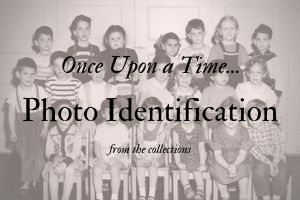
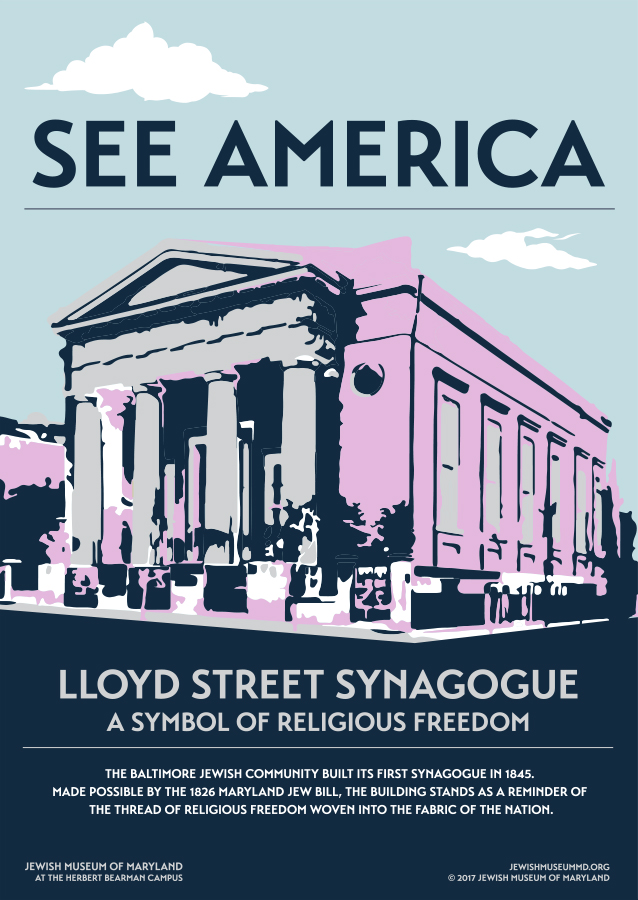
Every tour of the historic synagogue is unique. Curious questions asked by visitors, like you, is one of the reasons why no two tours are alike. While tours of the synagogue are not currently being offered, our Volunteers are sharing their knowledge and stories in our new “Ask Our Docents” series.
The Lloyd Street Synagogue, built in 1845, has a rich history. This year marks the building’s 175th anniversary, and while we have learned a lot about the people who worshipped in the building and the Jonestown community it calls home, there are still more stories to discover within its walls. In this series, Volunteers share their answers to your questions and other times join you in pondering a question that we don’t have an answer to.
Thank you to our Docents who have shared their insights to questions below. Do you have a question about the Lloyd Street Synagogue that you would like to ask our docents? Send it to Paige at pwoodhouse@jewishmuseummd.org.
Please note that some answers have been edited for clarity and length.
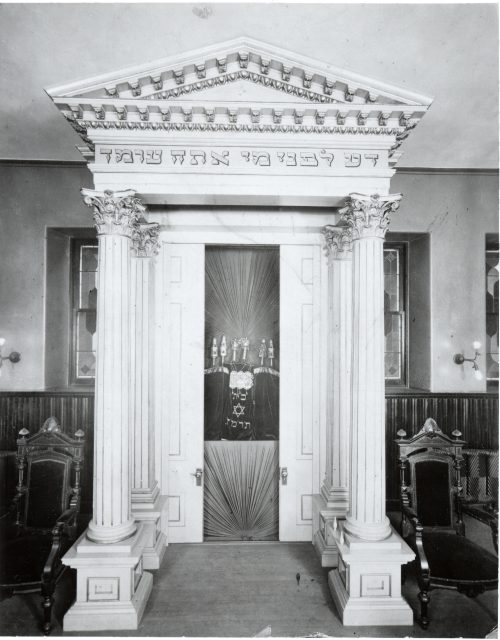
Question: What does the Hebrew script on the ark of the Lloyd Street Synagogue say?
JMM Docent Ted answered that the Hebrew script on the holy ark of the Lloyd Street Synagogue, where the Torahs are kept, means “Know before whom you stand.” These words are directly above the Ner Tamid, the everlasting light, which symbolizes the constant presence of God. I have seen these words on the arks of other synagogues, particularly in Europe.
JMM Docent Bruce added his thoughts about the inscription: Da lifnei mi attah omed is the inscription transliterated from the Hebrew seen here in this rare photo of the original ark of the Lloyd Street Synagogue. The saying translates to “Know Before Whom You Stand.”
On its surface, the phrase “know before whom you stand” refers to God’s presence. You always stand before God. Hashem is everywhere. He is with you when you stand up, when you walk down the street. It was incumbent to be a good person, to perform mitsvot, to tithe for the poor and follow the commandments.
Unfortunately, we do not have documentation of the ark prior to 1860. Therefore, we aren’t able to confirm this script was on the ark during the early days of Baltimore Hebrew Congregation, when Rabbi Rice was leading the congregation. However, Bruce also pondered about a second meaning for the words about decorum during services. His thoughts offer an intriguing discussion about other interpretations of the inscription: To understand the significance of the words I am thinking of the original shul’s first Rabbi and his religious philosophy. One should behave very well at shul. There should be no chattering or discussions during service. Rabbi Rice would not tolerate disturbances and would issue fines to unruly synagogue goers.*
* Issuing fines to congregants was a common practice in synagogues during this time period. Rabbi Abraham Rice, Baltimore Hebrew Congregation’s first rabbi, condemned what he saw as lax behavior among his congregants, especially the disregard of the Sabbath by striving merchants who felt they had no choice but to keep their shops open on Saturdays. Though he was supported by traditionalists within the congregation, disputes with his Americanizing flock became so bitter that he resigned from his pulpit in 1849.
That is the meaning of the words, “Know Before Whom You Stand.” The words are seen in many synagogues around the world as they were portrayed here at the Baltimore Hebrew Congregation.
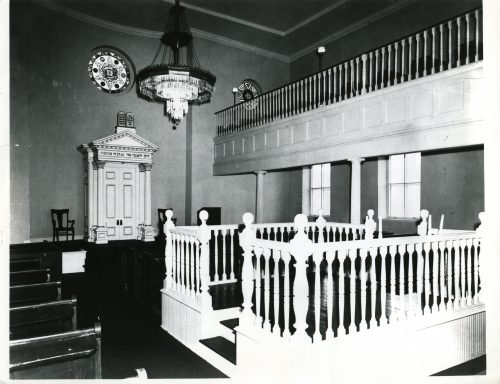
Question: What is the purpose of the Bimah? Why is it in the center of the pews?
JMM Docent Ted answered:
The bimah is the place where the Torah is read on the Jewish Sabbath (Saturday), Monday and Thursday. The Torah is a scroll containing the Five Books of Moses, which includes the original Jewish law. In many synagogues, including the Lloyd Street Synagogue and B’nai Israel Synagogue, the bimah is located in the center of the pews because of the tradition that the law should be read in the midst of the people.
Sometimes, visitors ask questions the infrastructure of the building. The Museum has done restoration projects throughout the years, including a major restoration and archeological investigation in the early 2000s. Each time we peel back a layer to the building, we learn more about it.
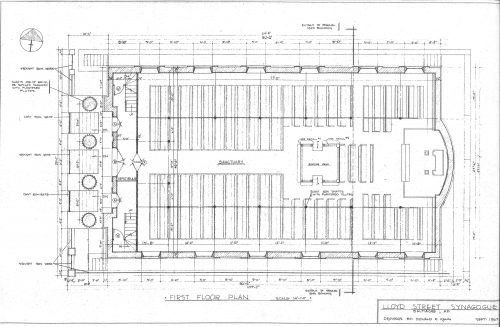
Question: How was the Lloyd Street Synagogue heated?
JMM Docent Lois reached out to her brother, Donald Kann, who was involved in the restoration of the Lloyd Street Synagogue. He shared his best guess for some time after the 1860s, “the heating … I would say was coal fired hot water. The heat came through pipes to the radiators throughout the building.”
Lois wondered if in the early days of the Baltimore Hebrew Congregation, families may have heated bricks or stones in their stoves, wrapped them in cloth, and brought them to the synagogue to put under their feet to keep them warm during services.
This blog series is shared as part of our year-long 175th Lloyd Street Synagogue anniversary celebrations. Keep an eye out for the Part II, when JMM Volunteer Docents answer visitor’s questions from the 175th Celebration program that took place on October 1st, 2020!

